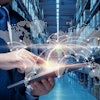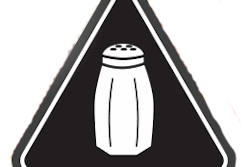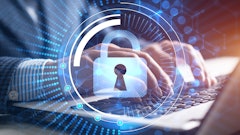
The U.S. Food and Drug Administration (FDA) has issued draft guidance for public comment that provides practical, voluntary sodium reduction targets for the food industry. Average sodium intake in the U.S. is approximately 3,400 mg/day. The draft short-term (two-year) and long-term (10-year) voluntary targets for the industry are intended to help the American public gradually reduce sodium intake to 2,300 milligrams (mg) per day, a level recommended by leading experts and the overwhelming body of scientific evidence. The targets are also intended to complement many existing efforts by food manufacturers, restaurants, and food service operations to reduce sodium in foods.
Americans consume almost 50 percent more sodium than what most experts recommend. One in three individuals has high blood pressure, which has been linked to diets high in sodium and is a major risk factor cause of heart disease and stroke. That number climbs to one in two African Americans and even includes one in 10 children aged eight to 17. While a majority of Americans reports watching or trying to reduce added salt in their diets, the deck has been stacked against them. The majority of sodium intake comes from processed and prepared foods, not the salt shaker.
The science supporting the relationship between sodium reduction and health is clear: When sodium intake increases, blood pressure increases, and high blood pressure is a major risk factor for heart disease and stroke – two leading causes of death in the U.S. (CDC has compiled a number of key studies , which continue to support the benefits of sodium reduction in lowering blood pressure. In some of these studies, researchers have estimated lowering U.S. sodium intake by about 40 percent over the next decade could save 500,000 lives and nearly $100 billion in healthcare costs.)
Editor's Insight: These guidelines are consistent with the new dietary guidelines that the government announced in January. The government, through its health guidance for consumers and for food processors, is fostering a growing demand for healthier products that has resulted in a need for more information about food ingredients.
Government guidelines, in conjunction with voluntary guidelines that many food processors have already embraced, have raised public interest in ingredient and nutrition information. Every player in the food supply chain has to maintain more of this information to comply with food safety rules. 6-1-16 By Elliot Maras

















